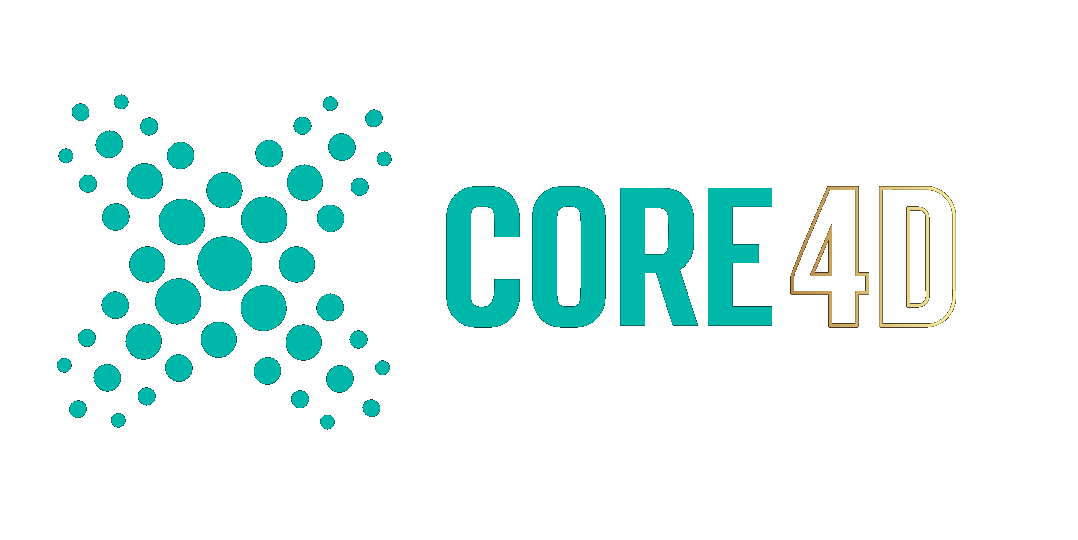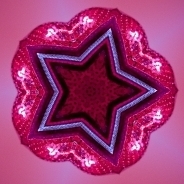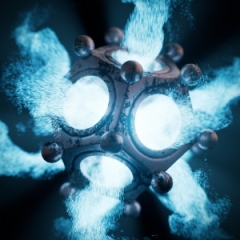Leaderboard
Popular Content
Showing content with the highest reputation since 09/21/2024 in all areas
-
Dear members In December, we are planning to remove ads permanently. We all know and understand how annoying they are but they helped us run the forums : ) Now we are in position to remove them for registered members and improve browing experience. This is made possible by contribution from a member which wants to remain anonymous and we wanted to say thank you to this person publicly10 points
-
I've been wanting to do some 'space' scenes for a while but tools to create star fields, planets, nebulae, etc. either don't exist or (if they do) are commercial plugins. So I decided to write my own. I've got several in the works but the first is now available - a shader for creating background star fields called 'StarScape'. Rather than post multiple sample renders here, you can see a few on my site at https://microbion.co.uk/html/starscape.htm I'm no artist, so I'm certain many people will be able to do a lot better than that 😀. It's completely free, has a full manual and is available for C4D 2024 (Windows and macOS) and 2025 (Windows only). I'll upload the 2024 version to the Downloads section here or you can get it from my site at the above link. Steve8 points
-
Wetmaps: I created a vertex map in field mode on the dinosaur and put the liquid mesher (with a bigger voxel size so it renders faster) into the field list. In the field settings, the mesher was set to volume, and I put a decay field on top with 100% so it stays wet where it has been touched by the mesher. I rendered the vertex map just as black/white mask, so I could use it in comp to darken the original render. Additionally, I rendered a seperate, very reflective pass of the dinosaur, that I added on top in comp, again using the wetmap as mask. trex_water_v007_Wetmap.mp4 I then comped everything together in Nuke. I tried to make a smooth transition between the simulated area around the dinosaur, and the rest of the lake, but that was a bit of a challenge and didn't work out to my full satisfaction...it's still noticeable that the simulation doesn't spread out to the rest of the lake. Some final thoughts: AFAIK, our liquids solver is an SPH solver, which is generally designed for small-scale fluids. FLIP would probably be better suited for fluids of that scale. I find it even more impressive that the new solver is capable of pulling this off. It's also very speedy and very stable. Fully art-directable as it works with all the forces, all other simulation types and all the particle modifiers. I enjoyed that little project.6 points
-
Hello everyone I am happy to announce that of Decemeber 1.st adsense will be removed. This will make the forum browsing experience become much nicer Thank you!6 points
-
Here are some insights from that little project: Easy things first. I reused the animation from my T. rex museum breakout: The environment is an HDRI from the asset browser. The lake (or river) is just a reflective plane with animated noise, and a gradient in the opacity channel to fade it softly into the backplate HDRI. The trickier part was the simulation, naturally. I wanted to simulate only the top layer of water, and I needed to figure out a way to only simulate particles in the area around the dinosaur. A whole lake would have been way too many particles of course. At first I tried to simulate it only in a "pool" that was a bit bigger than the T. rex, using the liquid fill emitter. It worked, but I had visible splashes at the border of the pool - unfortunate if you want the transition between simulation and the rest of the lake as seamless as possible. Instead of walls, I then gave the pool a slightly rising floor towards the edges. That helped mitigating the splashes at the border. However, I still had the problem that the liquid spreaded out pretty fast and drifted away from the dinosaur, where I actually wanted it to be. The beauty of the new liquids is that they work so seamlessly with the rest of the particles system: I could just use an attractor force in the center of the dinosaur. With the right settings, it helped keeping the particles near the T. rex, while still allowing it to act like a liquid. Here's the cached particles with the collider geo: trex_water_v007_Viewport.mp4 The sim contains 3.7 million particles. I used the liquid fill emitter with a radius of 0,7 cm. Sim time was IMHO very reasonable on my RTX 4090, around 20 mins for 150 frames. I would have liked to simulate even more particles, but when I lowered the radius to 0,6 cm (= 6 million particles), I didn't even see the first frame after waiting for several minutes, so I quit that. The cache is 27 GB. I only cached velocity, color and radius, which helped to reduce the size. I then used the liquid mesher with pretty much the default settings, but smaller influence scale, a lot more smoothing and the droplet size set to 10% - that really helps getting rid of those huge blobs that often appear. Here's a clay render, liquid mesh only: trex_water_v007_Clay.mp4 The particle color is mapped to the velocity, which was very handy to fake whitewater. I just remapped the particle color with a ramp to diffuse and reflection strength. The faster the particles, the brighter they are. I rendered them as a separate pass and added it on top in comp. Those particles render crazy fast! A few seconds per frame for 3,7 million particles with motion blur... that was a real joy. trex_water_v007_Whitewater.mp45 points
-
Here's a little project I made while I was betatesting the new liquids. trex_water_v006_high.mp45 points
-
One thing that irks me with every simulation tech I have used so far: Most of the time I want to emulate the movement of something from the real world, as closely as I can. And most of the time it's endless fiddling with somewhat abstract parameters to achieve the realistic movement I know from the physical object. It really should be the other way around. Let me make my object, define it's size and weight and then let me choose from fine-tuned, well-tested presets. That's water! Or milk. Or sand. And then offer an advanced mode where I can fiddle around with advection and all the stuff 'under the hood'. But really, let me express my artistic vision through my everyday-knowledge of the real world. I don't want to study particle physics for any simple sim I do.5 points
-
I would like to present you totally new way to create sky lighting mainly for arch-viz exterior usage but it is good for interiors too because it has some specific options. Advanced Sky for Cinema 4D : Cloudy sky simulation with soft transition from clear to cloudy sky included all three PRG, Hosek Wilkie and Preetham models Sun height, Sky rotation with individual HDRI map rotation connected to global Sky horizontal rotation Many options to change color of Sky models and HDRI maps like temperature, tint, saturation, exposure, hue... Individual control for Sun parameters Ground diffusion light which can improve brightness of polygons that are towards ground with included GI ( so it looks real not flat ) Horizon maps with included alpha - they can be scaled, moved with repeating effect Special ground plane for HDRI maps which doesn't have included ground - fully customizable PRG light color compensation to looks the same as Hosek-Wilkie HDRI's mixing - you can mix two HDR maps using different options for them ! Camera Exposure and White Point was additionally added to have better control on scene colors. HDRI reflection only object for creating custom reflections. It can be scaled by different ways and customized with color corrections. Tinting for all HDRI maps is now available. It fully works with other color corrections. D65 color correction as option was added to all HDRI maps. This is workaround for C4D issue while using ACEScg color space - HDRI maps looks wrong by default. Special Horizon reflection only map with cast shadow option. Advanced tabs for controlling Reflection and GI impact. Reset color option for individual Ground and Tint corrections. Extended parameters which works above original 100% to create specific effects like saturation, color corrections. Available : https://archviz4d.gumroad.com/l/pdmwo Self-explanation manual :5 points
-
New Tutorial: And a demo project file: stylized-wooden-ladder_vD01.c4d5 points
-
5 points
-
The new update came out a few hours ago ... I was getting anxious about when that would come out as I had unavoidable delays with my next feature suggestions list... It's quite a big update ! Lots of things to explore. I'm still waiting for Rocket Lasso to air something so I can understand what those "user-defined particle properties" are... Full feature list: https://help.maxon.net/c4d/en-us/Default.htm#html/33010.html?TocPath=_____3 Rest of MAXON ONE showcase: Soon a new Ask the Trainer will air. It is titled special so I guess it will be about 2025.15 points
-
Time to revive this thread, here is a fun one 🙂 12_Butterfly.c4d5 points
-
I would like to present advanced Sky-Rig system for Cinema 4D. Octane and Redshift versions. Using this rig you can have possibility to change every parameters of Sky, Horizon and HDRI map as you like with some special features : - Cloudy sky simulation with soft transition from clear to cloudy sky included special Custom model - Two Sky models included - Custom, Hosek & Wilkie - Sun height, Sky rotation with individual HDRI map rotation connected to global Sky horizontal rotation - Many options to change color of Sky models and HDRI maps like temperature, saturation, exposure, gamma - Disconnected Sky power from Sun Power - fell free to change them individually - Individual color controls for Sun and Sky parameters - Support for Horizon Line maps with included alpha - they can be scaled, moved with repeating effect - Virtual ground plane for HDRI maps which doesn't have included ground that works like backlight - fully customizable - Reflection only HDRI and 8-bit spherical map support - Two HDRI maps for fast switching and comparison - Camera white point included - Reset to default buttons Redshift : Available on Gumroad : Octane : https://archviz4d.gumroad.com/l/yqfoj Redshift : https://archviz4d.gumroad.com/l/pdmwo5 points
-
This nice little helper plugin creates brick wall and offer various parameters to control the final look. Single object is created with selections for brick and grout available. Here is a short video of it in action Find the plugin in store: https://www.core4d.com/ipb/store/product/50-brick-wall/ To install simply import it into content browser Requirements: Cinema version 2025+ is required5 points
-
Figured I haven't posted any recent work here for a while so here's a few of my better recent videos. The ones at the top are more fun as we've been given more freedom creatively to do what we think is best rather than taking orders from the suits with excel spreadsheets. All productions are 4-7 days of work. c4d 2024, octane 2023, rendering on 10x geforce 4090 cards. Not much in terms of post work, we tend to get it 95% there in-render, mostly just brightness, contrast and saturation changes. Plus a few lens flares on the top video.5 points
-
I feared this day would come. This is really sad to hear, but not unexpected if I'm honest. I'm not good at this stuff, but I still want to try: Thank you to everyone who has been running this forum in some form or another, be it via moderation or paying the servers out of their own pockets. Thank you for the invaluable help on the many questions over the years, as dumb as they sometimes maybe were. I would NOT be in the same position as I am right now if it wasn't for this forum. Not even close. And I am sure I am not the only one with this experience. This forum always was a positive energy in my life and I am sad to see it go. I came back here regularly even when I switched to Blender for two years, that should tell you everything you need to know about this community. The internet as we know it is unfortunately changing, and has been for years. And it is not for the better. Corporate got it's greedy grip around it at this point, and way too tightly. Everything is centralized now. Giant tech companies are able to build userbases with free access to their services while bleeding out competition, until they suddenly remove free tiers and / or increase pricing after years and years of running on a loss. This will happen to all these AI tools too, the moment investor money dries up (and it's already drying up, after the devastating news about AI investments recently). Comparatively small ventures like this forum are simply not able to do that, and I fear the time of forums in general is just over. They were already down years ago, and then Discord arrived started kicking the corpse. How ANYONE can think Discord is a legit replacement for old-style forums really has no idea what they're getting into. Just to make it clear, I think creating a Core4D Discord just to keep in contact with each other is a really cool idea that I support. So I'm not specifically talking about the people here with this post. But 10-15 years from now people will mourn "the great loss of information" because Discord WILL shut down / restrict access at some point and all that knowledge collected on these Discord servers will vanish. Not to mention the many people we will simply "lose in translation", especially probably many of the old guard how simply can't be bothered to switch to yet another platform. Discord servers can't really be found via Search Engines either. I'm not even sure Discord is even going to make it another 10 years, judging by how much it has already been enshittifed in the last year. As far as I know, they're prepping to go public. We all know what that means in the long term.4 points
-
I must admit I have almost no motivation to join some Discord after forum closes down, it simply doesn't have the same allure or structure I enjoyed so much. For me personally, this was more than just a forum. Tried my best to help and am really sorry to see it go away. Time to move on - good luck everyone!4 points
-
I'm shocked ! Is anyone interested in creating a Discord or other cheaper even free type of forum and move the content there ? I never knew the monthly or annual expenses of this forum. It could be nice if we had a donation bar on the top, like wikipedea or other startups have. It seems to have a psychological drive on people. Did we ever have that ?4 points
-
I haven't tried the update yet, but I feel need to comment on the presentation... It was sooo underwhelming o_O UDIM... ok, read about that, but why not show a real-world-problem, then the new tools, then the superior final product? Jonas focused way too much on UV-Layouts, and in the end, I still have no idea what benefit I get from this tool. Faster workflow? Higher quality? I don't know. Jonas leaving the presentation was really awkward, why not choose hosts who have enough time to spare for talking to us customers? Laubwerk Assets now available in the asset browser - nice! But why show the variations in the viewport and not with a nice render? I have no idea if these assets are any good (I guess not, since it's all somewhat procedural?) Redshift now officially supports nvidia RTX5000 series. Well, then please give us at least some example benchmarks! "Render 30% faster than on a 4090" would have been really good information. Or show the interactivity boost of IPR on an 5090, to get some "ooOOOOhs" out of the audience. Redshift New OIDN update... cool, but please: zoom in and show an before/After-comparison of the Denoising quality! Give us the dirty details, in this case, they make all the difference. Redshift Portal lights updates... I mean, come on. That was changelog-material, but for the bottom part. No need to show a line on the gizmo to strech out the time until the gread liquids reveal... ... and then Noseman chooses this laggy, 1-fps-scene of a mildly irritating chocolate stream an an alien cake to introduce the world to C4D's long awaited new liquid system? After getting so much flak for the gingerbread teaser? I mean, the gingerbread-teaser's erratic particles are smoothed out, but this looks like liquid tech from the time they made Terminator 2. And then there's scene after scene after scene where we only get super simple, manual-style scenes showing some aspects of the new tech, but Noseman rushes through as if he was embarassed by the shortcomings of the new tech. And there seem to be many? There was not even a mildly complex example; performance was really sub-par (why not get Noseman a 5090 for this gig, if his 5-years-old-hardware is to blame?), no whitewater supported... and the capabilities of the tech were only described afterwards, when the viewers asked explicitly about it. So, all in all, this seemed like a very hastily thrown-together presentation of features that should have cooked some months longer. I really miss Chris Schmidt's presentation of new releases... he perfectly mixed the Wow-Factor about new possibilities with little tutorial aspects ("See? It's not even complicated to set up!") and some interesting technical insights, which made it even clearer what can and can't be done with new features. I hope they get him back for future releases. Edit: This 5-minute read is a much better presenttion of the june update than that whole 30min-Video-Stream 😕4 points
-
There are some very interesting new features. Particles have an extensive list of new functionalities from which the following stand out. The Field-driven density distribution of particles is highly appreciated along with in-built noise shaders for both distribution and emission. Density control shaders and Fields is something I've been asking for MoGraph for years. Finally it can be achieved through particles. Noise Sampling for Color and Data Mapper https://help.maxon.net/c4d/en-us/Content/Resources/Images/2025-2_Particles_NoiseSampling_01.mp4 https://help.maxon.net/c4d/en-us/Content/Resources/Images/2025-2_Particles_NoiseSampling_02.mp4 Neighbor Search algorithm for Flock, Predator Prey and Blending Similar to the geometry density coloring effect I've been asking. Some Scene Node Capsules are now directly available with other primitives from drop-down menus. This was something I was actively arguing about from early versions of Scene Nodes as it was a closely UX-related issue. Things were pointing to parallel ecosystems of the same tools being developed under the same application or tools that were not that easily accessible that would inevitably lead to confusion or frustration among new and old users. It wasn't too long ago you could finally make capsules accessible from custom pallets but that required from users to know how to do that and as SceneNodes was so actively characterized as experimental or system for advanced users, people would prefer staying away from it missing some key features that were not that hard to use after all. Personally I extend my custom Layout with capsules supported by the OM every new version. Now the Line Spline is available along with the Break Spline, Branch Spline (which is an easier MoSpline Turtle), Catenary Spline, Dash Spline, Electric Spline, Partition and Pulse Spline. What I don't know is if they re-developed those tools in C++ or if they are just links to the node implementation with modernized icons to fit with the rest of UI. Well, there are still some argument about what should be characterized as a Generator what as a Modifier and what as a Deformer... For example the Branch Spline is more fitted to the Generators club as it does create additional splines on top of the original but I guess they run out of ideas on how to represent it with a new icon to avoid confusion with the MoSpline... Which leads to other old arrangement arguments like why don't we just have new features part of older tools as modes... For example the Branch Spline as Mode of the MoSpline... Break, Dash, Partition and Pulse modes of a single spline deformer/modifier or Wrap, Shrink Wrap and Spherify as modes of a single deformer... Looking forward to seeing all distribution nodes as modes in the Cloner and Blue Noise as a mode of the Push Apart Effector. New mode for the Look at Camera expression I always thought this to be an old remnant from earlier C4D versions... I never used it because I achieved the exact same effect using the Target tag... I still don't know what the difference between them is... Some unfortunate translation issues: Weird title, not available in English (fixed the next day) https://help.maxon.net/c4d/en-us/Default.htm#html/OFPBLEND-FP_BLEND_OBJECT_OUTPUT.html MAXON ONE capsules are not documented... Bad marketing as other users don't know what they are missing Things that we saw in the teaser video but they are not documented (yet) Constellation Generator (Plexus effect) Liquid Simulator (yeah... the thing that should be teased the most was not)4 points
-
Maxon Unveils Game-Changing Cinema 4D 2025 Update: Enhanced Modeling, Texturing, and Scene Nodes March 31, 2025 – Los Angeles, CA – Maxon has officially announced the highly anticipated Cinema 4D 2025.1.4 update, promising groundbreaking new features that will redefine the 3D animation and motion graphics industry. This latest iteration of Cinema 4D introduces significant improvements to modeling, texturing, Scene Nodes, and animation workflows, ensuring a more seamless experience for artists. Official Statement from Maxon’s CEO “Cinema 4D 2025.1.4 is not just an update—it’s a revolution. We’ve listened to our users and implemented features that streamline workflows, accelerate creativity, and push the boundaries of what’s possible in 3D design. Our latest enhancements to modeling, texturing, and Scene Nodes will empower artists like never before.” — David McGavran, CEO of Maxon Key Features of Cinema 4D 2025.1.4: 🔹 Enhanced Parametric Modeling Tools – New and improved parametric objects offer greater control, including advanced spline editing and interactive beveling. 🔹 Advanced Scene Nodes 2.0 – A major update to Scene Nodes introduces a more intuitive interface, expanded procedural modeling options, and real-time performance boosts. 🔹 Improved UV Packing and Unwrapping – A completely reworked UV workflow includes automated packing, distortion minimization, and island grouping for better texturing efficiency. 🔹 Neural Render Engine (NRE) – Cinema 4D now features an AI-powered render engine that reduces render times by up to 90% while maintaining photorealistic quality. 🔹 Real-Time Path Tracing – A fully integrated real-time path tracer allows users to see near-final renders directly in the viewport. 🔹 Auto-Rigging AI – Character animation just got easier with an intelligent rigging system that auto-detects joints and optimizes weights instantly. 🔹 HoloC4D VR Integration – For the first time, users can sculpt, animate, and render in a fully immersive VR environment. 🔹 Redshift Cloud Render – A new cloud-based rendering system allows users to offload heavy render jobs and access high-performance GPU farms directly from Cinema 4D. 🔹 Deepfake MoGraph Generator – A new AI-assisted tool that generates realistic face animations from a single image input. 🔹 AI-Assisted Material Suggestion – The new AI-driven material engine suggests realistic textures and shader settings based on your scene context. Spline SDF Smooh blending of 2D splines. Outline Capsule Unlimited number of oulines with the new Outline Node and capsule Chamferer The new Chamferer generator brings non-destructive, parametric editing on individual spline control points Field Distribution Cloner Mode Fields can now be used to place children instances by mapping the hierarchy of the children to the intensity of the field. Release Date and Availability Cinema 4D 2025.1.4 will roll out as a free update for all Maxon One subscribers starting April 1, 2025. Perpetual license holders will have the option to upgrade at a discounted rate. For more details, visit www.maxon.net. Exclusive Interview with Maxon’s CEO, David McGavran Q: What was the main focus for Cinema 4D 2025.1.4? David McGavran: “Our primary goal was to refine and enhance the tools that artists use daily. We wanted to create a more intuitive and efficient experience, whether it's through procedural modeling, advanced texturing, or improved rendering. The new Scene Nodes 2.0 is a huge leap forward, allowing artists to build complex structures with ease.” Q: How does this update compare to previous ones? David McGavran: “While every update brings innovations, this one focuses on practical enhancements that improve workflow speed and creative flexibility. We've also made significant improvements to UV workflows, Boolean modeling, and dynamic simulations based on user feedback.” Q: Can you give us a sneak peek into the future of Cinema 4D? David McGavran: “Absolutely. We are already developing features for Cinema 4D 2026 that will push procedural modeling even further. Expect deeper Redshift integration, better scene organization tools, and an overhaul of particle simulations. We're also exploring more real-time collaboration features to make remote workflows even smoother.”4 points
-
New around here and back in C4D land after a VERY long break. I was an avid Modo user and also I'm a former Foundry employee from back around the time of the acquisition 😅 although I was a designer, not a product manager but I do still have a bunch of friends there and sadly when development stopped, some of my friends got laid off. The TL;DR of why modo probably isn't around is its small foothold in professional markets. It's the best modeller out there, nothing else even comes close. There's one or two people in most VFX studios and they're generally very happy and very productive. But Modo in its early days had a huge number of hobbyist users. Post buyout, they started leaving in droves, in part initially due to the Foundry wanting to push it further into VFX (Which didn't work) and then they pivoted to a number of product design contracts and focused a lot of development there. The hobbyists initially frustrated and then priced out, they left mostly for blender. A lot of professional users stuck around, but those relationships often became more strained over time. Modo was never the most stable application and it's had a rocky history with stability depending on release. Some might bring some awesome features, but it also might crash 10 times a day. A lot of them left too. In terms of features though, there's a lot of incorrect info out there about Modo - it had a rep for only being a modeller, which just wasn't true, it had a bunch of awesome features: Dynamics, some pretty decent mograph/replication tools, sculpting and painting (About on par with boy paint FWIW), a kickass (But CPU only) renderer, super intuitive material workflow, some fairly decent animation tools and some crazy customisation capabilities. But it was very much a jack of all trades and none of those aspects were strong enough compared to the modelling. It was either "it only does modelling right?" or "Every feature apart from modelling sucked" the truth as always was somewhere in the middle. It covered a lot of the same ground as Blender, with a lot of the same weaknesses - it just cost much more 😂 I imagine unless you were a serious modeller and super committed it became a very hard sell. I've now made the decision to move the bulk of my work back to C4D, as I'm not a huge fan of Blender and hate Autodesk with a passion. I've always had a soft spot for C4D and it was my main package for about 5 years before Modo. I'm not a super serious modeller and most of what I do is product shots and mograph adjacent things. I'll still be doing my modelling in Modo for the foreseeable though, they've issued a 10 year EOL license that anyone can get ahold of. My commercial license runs out next month. ...that was quite a long TLDR, but someone might find it interesting IDK.4 points
-
ok, main thing here is that sometimes too much detail is a bad thing. Your displacement map is a 2000x4000 image which is fine, but youve told octane's displacement to use a resolution of 8000x8000. This means the displacement is going to start showing the lower resolution of the image in the geometry. Lower the resolution of the displacement to 4k or 2k, then on top of that add in 2-3 pixels of gaussian blur below to give it a little more chance at being smooth. Next you can bump up the AA filter size a little. The default is 1.2 pixels wide, youll be fine with 1.3 or 1.4 Then I actually lowered the reflection depth down from 32 to I think about 10. Your letters are reflecting each other, making reflections of reflections. This wouldnt be so bad, but... ... your glass is too perfect. With 0% roughness you dont have glass, you have the most pristine diamond in the world. Ive taken the greyscale displacement map and piped it into the roughness of the glass, this way only the lettering will get a slightly rougher/softer finish. Its then dialled way back by setting the mix value of the roughness channel to 0.02 so it only affects it very slightly. This gets me from here to here4 points
-
Absolutely, and to you my friend and from me to you all 🙂 🤪✨ I know I post this every year, but never stops being funny. CBR4 points
-
Dear members Adsense is gone now. This should vastly improve browsing experience. Please let us know if you notice some remnants so we can act on it. Big thanks to all subscribers and contributors, this would not be possible without you ❤️4 points
-
CORE4D has got a great beginning series: My Scene Nodes 101 series isn't exhaustive but has some simpler examples: For more advanced training, Dominik Ruckli has some great videos: Dominik Ruckli - YouTube Additionally - once you've got a handle on Scene Nodes data structures and beginning/intermediate setups, you can generally follow along with Houdini / Geo Nodes tutorials. For those, it is hard to do better than Entagma: Entagma - YouTube4 points
-
Hi CG-fans! Nice of you to drop by and check out my little corner where I would like to present my handmade texture collections. https://mlon.gumroad.com/ No shameless self-promotion whatsoever here! 🙂 This started out as a free-time fun project where I made photos of my surroundings and created textures from them that I gave away reaaally long ago on Cg Channel and Lightwave forums. Then I thought of creating a few new packs because I like doing it and see if I can sell them to likeminded people who could use them in their projects. I am mostly focused on archviz and have worked on several tv-series, animations and movies. So, here I am selling you my stuff! 🙂 Each material has a C4D scene and rendered with Corona. This is my first Gumroad page and am not even sure it works. We'll see if I have set it up properly, haha! Anyway, if you have suggestions, problems or tips then don't hesitate and let me know. Oh and if you buy 2 packs you get the third for free. Just shoot me a mail with the ones you bought and I will send you the third one. Thanks! Cheers, mlon4 points
-
Obviously biased here but C4D is quite a package at the moment 🙂 Regarding Modo, abandoning such a large code base must have been difficult decision. There must be a lot of tech that will be extracted and placed elsewhere. There is also a remote possibility, pure speculation of course, to create new3D package.4 points
-
Despite the fact about the constant whining on the forums about C4D and that it was considered an amateur tool a decade ago it has now outlived a good number of competitors.4 points
-
4 points
-
Yes indeed, I am also thinking about GeoJSON support and load from OpenStreetMap, but the way the road are designed is different. However, there is a new big update with the support of median stripe (not sure about the translation) : - Median - Better performance - Undo / Redo - New bike texture https://code.vonc.fr/pathphalt You can try this configuration : {"roads":[{"prio":1,"curve":"centripetal","sub":40,"shear":0,"tex":"wear2","texL":"","texR":"","lineOnly":false,"points":[{"id":0,"prio":1,"width":30,"wLine":5,"texL":"","texR":"","pos":{"x":-100,"y":0,"z":0}},{"id":1,"prio":1,"width":30,"wLine":5,"texL":"","texR":"","pos":{"x":0,"y":0,"z":0}},{"id":2,"prio":1,"width":30,"wLine":5,"texL":"","texR":"","pos":{"x":100,"y":0,"z":0}}],"modLignes":[{"id":0,"tex":"empty","width":"3","offset":"0","shear":"0","side":"gauche","color":"#ffffff","pos":{"x":39.396875316,"y":0,"z":-15}},{"id":1,"tex":"empty","width":3,"offset":0,"shear":0,"side":"droite","color":"#ffffff","pos":{"x":38.086987303,"y":0,"z":15}},{"id":2,"tex":"empty","width":"3","offset":"0","shear":"0","side":"gauche","color":"#ffffff","pos":{"x":-62.123474544,"y":0,"z":-15}},{"id":3,"tex":"empty","width":"3","offset":"0","shear":"0","side":"droite","color":"#ffffff","pos":{"x":-67.302948819,"y":0,"z":15}},{"id":4,"tex":"empty","width":"3","offset":"0","shear":"0","side":"droite","color":"#ffffff","pos":{"x":-30.103290328,"y":0,"z":15}},{"id":5,"tex":"stop","width":4,"offset":-9,"shear":0,"side":"droite","color":"#ffffff","pos":{"x":27.00899457,"y":0,"z":15}}]},{"prio":1,"curve":"centripetal","sub":40,"shear":0,"tex":"wear2","texL":"","texR":"","lineOnly":false,"points":[{"id":3,"prio":1,"width":30,"wLine":5,"texL":"","texR":"","pos":{"x":20,"y":0,"z":-100}},{"id":4,"prio":1,"width":30,"wLine":5,"texL":"","texR":"","pos":{"x":20,"y":0,"z":0}},{"id":5,"prio":1,"width":30,"wLine":5,"texL":"","texR":"","pos":{"x":20,"y":0,"z":100}}],"modLignes":[{"id":6,"tex":"empty","width":"3","offset":"0","shear":"0","side":"gauche","color":"#ffffff","pos":{"x":35,"y":0,"z":-17.837263259}},{"id":7,"tex":"empty","width":3,"offset":0,"shear":0,"side":"gauche","color":"#ffffff","pos":{"x":35,"y":0,"z":24.403466582}},{"id":8,"tex":"empty","width":"3","offset":"0","shear":"0","side":"droite","color":"#ffffff","pos":{"x":5,"y":0,"z":-59.900413914}},{"id":9,"tex":"empty","width":"3","offset":"0","shear":"0","side":"droite","color":"#ffffff","pos":{"x":5,"y":0,"z":31.585357038}}]},{"prio":1,"curve":"centripetal","sub":40,"shear":0,"tex":"bike","texL":"","texR":"","lineOnly":false,"points":[{"id":6,"prio":1,"width":10,"wLine":5,"texL":"","texR":"","pos":{"x":-70.627555784,"y":0,"z":51.190721316}},{"id":7,"prio":1,"width":10,"wLine":5,"texL":"","texR":"","pos":{"x":-13.172042513,"y":0,"z":-35.25534822}},{"id":8,"prio":1,"width":10,"wLine":5,"texL":"","texR":"","pos":{"x":84.80652565,"y":0,"z":-76.60485278}}],"modLignes":[{"id":10,"tex":"empty","width":"3","offset":"0","shear":"0","side":"droite","color":"#ffffff","pos":{"x":-4.494001118,"y":0,"z":-35.631325338}},{"id":11,"tex":"empty","width":"3","offset":"0","shear":"0","side":"gauche","color":"#ffffff","pos":{"x":-13.691259738,"y":0,"z":-41.16251629}},{"id":12,"tex":"empty","width":"3","offset":"0","shear":"0","side":"droite","color":"#ffffff","pos":{"x":-52.492035814,"y":0,"z":26.206269416}},{"id":13,"tex":"empty","width":"3","offset":"0","shear":"0","side":"gauche","color":"#ffffff","pos":{"x":-62.304384741,"y":0,"z":23.369488233}},{"id":14,"tex":"yield","width":3,"offset":-2,"shear":-1,"side":"droite","color":"#ffffff","pos":{"x":-33.318294531,"y":0,"z":-5.56126942}},{"id":15,"tex":"empty","width":"3","offset":"0","shear":"0","side":"gauche","color":"#ffffff","pos":{"x":-43.506444211,"y":0,"z":-8.426703539}},{"id":16,"tex":"empty","width":"3","offset":"0","shear":"0","side":"droite","color":"#ffffff","pos":{"x":40.084634038,"y":0,"z":-57.833407636}},{"id":17,"tex":"empty","width":"3","offset":"0","shear":"0","side":"gauche","color":"#ffffff","pos":{"x":39.832640212,"y":0,"z":-68.339736675}},{"id":18,"tex":"yield","width":3,"offset":-2,"shear":1,"side":"droite","color":"#ffffff","pos":{"x":13.538677417,"y":0,"z":-46.528428659}}]}],"modSols":[{"id":19,"tex":"asphalt","color":"#ffffff","rot":"0","fill":"medianBevel","lineTex":"lineUsed","lineCol":"#ffffff","lineW":3,"lineOff":-1,"pos":{"x":60.003474111,"y":-0.1,"z":-33.761216957}},{"id":20,"tex":"asphalt","color":"#ffffff","rot":"0","fill":"medianBorder","lineTex":"lineUsed","lineCol":"#fbe01c","lineW":3,"lineOff":-1,"pos":{"x":60.284636448,"y":-0.1,"z":25.249393975}},{"id":21,"tex":"asphalt","color":"#ffffff","rot":"0","fill":"medianBevel","lineTex":"lineUsed","lineCol":"#ffffff","lineW":3,"lineOff":-1,"pos":{"x":42.885203556,"y":-0.1,"z":-82.208960311}},{"id":22,"tex":"asphalt","color":"#ffffff","rot":"0","fill":"medianBevel2","lineTex":"lineUsed","lineCol":"#ffffff","lineW":3,"lineOff":-1,"pos":{"x":-18.403487882,"y":-0.1,"z":-56.121304811}},{"id":23,"tex":"asphalt","color":"#ffffff","rot":"0","fill":"medianBevel2","lineTex":"lineUsed","lineCol":"#ffffff","lineW":3,"lineOff":-1,"pos":{"x":-0.159001486,"y":-0.1,"z":-24.258869672}},{"id":24,"tex":"asphalt","color":"#ffffff","rot":"0","fill":"medianBevel","lineTex":"lineUsed","lineCol":"#ffffff","lineW":3,"lineOff":-1,"pos":{"x":-77.120233245,"y":-0.1,"z":25.41978791}},{"id":25,"tex":"asphalt","color":"#ffffff","rot":"0","fill":"medianBevel","lineTex":"lineUsed","lineCol":"#ffffff","lineW":3,"lineOff":-1,"pos":{"x":-16.930274425,"y":-0.1,"z":31.746082441}},{"id":26,"tex":"plain","color":"#2687fd","rot":"0","fill":"","lineTex":"","lineCol":"#ffffff","lineW":3,"lineOff":0,"pos":{"x":-23.515035174,"y":-0.1,"z":-26.680503951}},{"id":27,"tex":"plain","color":"#2687fd","rot":"0","fill":"","lineTex":"","lineCol":"#ffffff","lineW":3,"lineOff":0,"pos":{"x":18.996212676,"y":-0.1,"z":-54.284936783}},{"id":28,"tex":"plain","color":"#2687fd","rot":"0","fill":"","lineTex":"","lineCol":"#ffffff","lineW":3,"lineOff":0,"pos":{"x":46.37003041,"y":-0.1,"z":-65.996907718}},{"id":29,"tex":"plain","color":"#2687fd","rot":"0","fill":"","lineTex":"","lineCol":"#ffffff","lineW":3,"lineOff":0,"pos":{"x":-45.21484908,"y":-0.1,"z":-1.738057586}},{"id":30,"tex":"plain","color":"#2687fd","rot":"0","fill":"","lineTex":"","lineCol":"#ffffff","lineW":3,"lineOff":0,"pos":{"x":-59.130172915,"y":-0.1,"z":28.602254614}}],"markings":[],"background":{"x":0,"z":0,"sx":1,"sy":1,"rot":0}}4 points
-
Looks pretty slick. AI agent, advanced brush for vegetation, AI PBR materials, IES control, etc.3 points
-
Hrvoje Srdelic is our well known forum member and C4D guru. Always ready to help, often assisting in backend as well, we are truly happy to interview him. There is an understated modest quality about him and dedication put into C4D eco system is well known and recognized. Expert in many areas who helped shape the community for many years. Stuff about you : Former / current workplaces, Achievements, Interests and hobbies 46, married, with a wife, a kid, a mortgage. You could say semi-grown-up 🙂 In 2011, I joined the Maxon beta team and took on the testing role with the same focus, attention, and dedication I had given to my previous jobs and freelancing work. Those efforts did not go unnoticed, and I was offered a position at Maxon, where I continue to work to this day. A highlight of my career was receiving an Academy Award for MoGraph as part of the development team. Apart from 3D, I’ve fully adopted a Mediterranean lifestyle, spiced up with heavy gym sessions and outdoor activities like ziplining, canoeing, and mountain biking. Lately, I’ve been getting into programming, especially nodes. For relaxation, a good book with a good coffee is an unbeatable combo. Q: Describe yourself in a single word Tenacious Q: How did you get into C4D and 3D in general? Back in the 90s, after finishing my education, my first job was at a computer shop. This gave me a solid foundation in hardware and software, which served me well from then on. My next job at a design company sparked what you could call an obsession with 3D. I was captivated by the possibility of virtually constructing my own ideas. The fact that I could iterate and improve creations without real-world constraints was an uplifting experience that fueled endless enthusiasm. Over time, I became proficient in various 3D disciplines. Around 2010, I started freelancing and, after careful consideration, chose Cinema 4D as my main tool. Its simplicity, fast turnaround, parametric nature, and overall stability sealed the deal. As a bonus, I discovered this wonderful forum. I spent a lot of time asking questions and learning. Eventually, I realized I was answering questions frequently, mostly because I felt indebted to the community that helped shape my career. Back then, I noticed a lack of systematic, end-to-end learning materials for C4D, so I took the plunge and created the popular Vertex Pusher series. Q: Which area interests you most? Nodes, MoGraph, and simulations. Q: What other apps are you using and what for? I use various software daily, like GIMP, Camtasia, Vectorworks, and Adobe tools. Q: Which learning resources would you recommend? The CORE4D YouTube channel iis excellent, especially for technical topics. Of course, I have to mention Noseman and the Maxon training channel, wish I had that when I was starting 🙂 In the past, I relied on YouTube with heavy filtering to find quality content. At the time, there wasn’t a single go-to source. Q: Do you think talent is overrated and can be offset with hard work? Yes. Q: Thoughts on AI? It’s just a tool. You can get impressive results without requiring specific expertise, but I don’t see it replacing humans. Q: Tell us something we couldn’t possibly know about you. I’ve also worked in construction and as a lumberjack. At one point, I was also a life guard. Physical work brings me great joy, and my wife often keeps me busy with an endless list of household projects. Q: Top 3 wishes for C4D? I see C4D as a mature platform. It has evolved to the point where users can stay in C4D for most, if not all 3D content creation — unless very specific requirements need to be met. Refining and polishing it as a daily tool, simply progressing on all features and maintaining quality would be high on the list. There are directions I’d personally pursue much further, but they’re likely not what most users would want (remember, I love nodes and technical stuff!). Q: Message for CORE4D? Lately, there has been more content consumption and fewer conversations. With information so readily available, people are engaging less in sharing and talking with fellow artists. I find this counterproductive, as it disconnects people from the most satisfying part of being in a community. I encourage everyone to share their work, start or reply to topics, follow up, show examples, and network. Avoiding these actions is one reason many artists struggle to find gigs or jobs. You managed to model your first object? Rendered your first image? Created your first animation? Share it, and don't be surprised by the positive encouragement you will receive! Q: How can people contact you? I’m easily reachable via PM on this forum.3 points
-
3 points
-
Why did I hear about this just now ? And why aren't these part of the main app ? Anyway, for anyone who's been living under a rock like me here are the links https://github.com/Maxon-Computer/Cinema-4D-Python-API-Examples https://github.com/Maxon-Computer/Redshift-OSL-Shaders3 points
-
Well.... I've asked (and still asking) for a Helix 2.0 with myltiple modes like Logarithmic. Archimedian and Double but primitives won't ever change in fear of compatibility break with older projects. But you could try it just on a Symmetry Object ...3 points
-
3 points
-
Here is how to calculate smooth tangents in nodes. Setup is interesting because it shows some previous/next iteration techniques which are widely applicable 🙂 237_Calc_smooth_tangents.c4d3 points
-
@Smolak import c4d def main(): objs = doc.GetActiveObjects(0) for index, obj in enumerate(objs): inst = c4d.BaseObject(c4d.Oinstance) inst.InsertAfter(obj) inst[c4d.INSTANCEOBJECT_LINK] = obj inst.SetName(obj.GetName()+"_inst") orig_pos = c4d.BaseObject.GetAbsPos(obj) orig_rot = c4d.BaseObject.GetAbsRot(obj) orig_scl = c4d.BaseObject.GetAbsScale(obj) print(orig_pos, orig_rot, orig_scl) inst.SetAbsPos(orig_pos) inst.SetAbsRot(orig_rot) inst.SetAbsScale(orig_scl) if index == 0: doc.SetActiveObject(inst, mode=c4d.SELECTION_NEW) else: doc.SetActiveObject(inst, mode=c4d.SELECTION_ADD) c4d.EventAdd() if __name__=='__main__': main()3 points
-
New Booleans are definitely better. Far superior hierarchical / tag-based workflow, no longer requires solid operands, operands can now intersect each other with less likelihood of problems, glitching is much reduced in animation setups, surfacing is generally better, and it is faster to calculate than the old system was. It also succeeds in many situations where the old one would fail. So, as someone who has been rigorously testing this for a while, I have to say I am very impressed with it and it is a significant upgrade to Cinema's modelling toolset. CBR3 points
-
I know the pattern doesnt stretch in real life, foil doesnt stretch. But there is literally no other solution. It doesnt matter what you do with the material projection, or UVs, you are asking for the impossible, it cannot be done. The only way it will work is if your 3d model incorporates the same folds, creases and imperfections that you see in the photos. You have to model the folding of the foil to keep your even pattern, there is physically no way to make it work on a smooth crease-less foil neck. Go take a look on turbosquid: https://www.turbosquid.com/Search/Index.cfm?keyword=champagne+bottle&media_typeid=2 Every champagne bottle on there either; Doesnt have a pattern on the neck Has the pattern squash and stretch Has the pattern cut off 4 times with cubic projection with seams Curls the whole pattern around like a beer bottle neck label Here, cubic mapping using folded flaps to hide the seams. even diamonds and cyl shape test.zip3 points
-
While studying the fascinating concept of density (gradient), I thought about applying what I learned to the previous project and I must say that I really like the result. Naturally in an absolutely primordial state, in this test I tried to obtain a sort of effective fluid dynamics from a performance point of view by feeding "only" 20,000 particles. Currently the code produces good fluidity (with adjustable viscosity) and a taste of surface tension, in the future I will try to refine the system!3 points
-
Righty - here's how I'd go about modelling that base... We have 12 way rotational symmetry, and within that 2 way planar symmetry, meaning we only have to design topology for a nice small manageable section. And we don't need to go to the centre with that, because that is on a dual axis curve so we don't want any poles there. We'll make a patch for that later. 1. I started by outlining the main nubbin with as few polys as I thought I could get away with (whilst still keeping them mainly even)... I am using HB retopo for this, but if you find yourself without that, then polygon snap will do just fine in a pinch, and you could even shrink wrap onto the CAD model to more rigidly stick to that surface as you work)... I am working with symmetry here, so have only modelled the right side... you can optionally use the symmetry Hub / mode, but for technical reasons, I didn't on this occasion ! 2. Next, let's patch that any old how, expecting to need to revise it later, and expand the upper border... mostly using poly pen here, and frequently utilising things like smooth edges and equal spacing to keep things neat... 3. We need to continue out to half way across the square block bits, so did that, trying to keep edges as even as possible. 4. But now my modelling spidey senses kick in to suggest we'll be needing some harder edges and corners on the inner edge of the square bits, and that we should continue the lower loop around the indent on, to keep its outer control loop flowing around it (rather than down towards the centre), which led to the following topology changes... So I've run an extra loop across the square bit, and slid some edges about to get tight control loops for those corners, but, crucially, have got 4 evenly spaced edges at both inner and outer borders, which is vital for perfect SDS circularity (top) and partial sphericity (inner). I actually went on a bit beyond this to tighten those corners further before the next stage, and added some consistency as to how I did the cornering and additional loops round bevels for better base mesh definition. 5. So, having got one segment of the 12 mostly right, we can radial clone that x 12 to get the complete outer ring for the base. That'll need to be in a connect (weld on) to join those together. Having done that, we can make that connect editable, and count our border edges, which in my case was 48, which we can divide by 4 to conclude that we need a 12 x 12 plane for that centre section, and we will need to make that editable, Fit Circle it, relax / iron the inner points, project it to the CAD model (shrink wrap deformer) so we match the curve exactly and then CO&D that to the connect we made earlier, which should match perfectly if plans have gone well thus far... This means we don't have any complex poles in the base on that subtle curved area at the centre, which is important, because even though the slope is quite gentle there, it curves in 2 directions at once, so triangles or pole counts more than 4 will produce SDS artefacts that will be variously noticeable and not fixed by adding more SDS levels. SDS L3 is perfectly sufficient for this unless we choose to use SDS edge weighting (not necessary here), which would necessitate an extra level of it. ...and that leaves us a very manageable 48 radial polys with which to work our way up the rest of the bottle... We conclude that section with an Optimize, and checking it with Mesh Checker to hopefully reveal all quads and no borders, isolated points, or other errors ! 🙂 Hope that helps CBR3 points
-
Cinema is much nicer to use, but that alone doesn't make it more professional than blender. There are thing about blender that are worse and things that are better. Cinema makes it much easier to love it for its UI constancy and overall logic of use. But right now Blender with cycles is so much more stable than cinema with redshift. You can download all old versions of it if you want to open an old project or if they droppend a feature. The node system in Blender ist more consitent than cinemas and much easier to use and then there are features that are not available for cinema like the compositor (yes it actually is really usefull) or eevee. But yes blender pisses you off every day when you are used to use cinema. Imho blender is just for another industry and another style of working. Anyway less competition is always bad! I personally see this as a sign that the market for commercial 3D software is going to get really problematic in the future. RIP Modo3 points
-
Let's start by a simple burning match, nothing fancy, showing how Pyro plays with MoGraph 01_Burning_Match.c4d3 points
-
For anyone whos not heard of meatcayon, he makes some disturbing yet highly entertaining 2d animations, one of my favourites is his Pinocchio short from a few years ago, on our Discord channel we're running a spooky October modelling challenge so i thought i'd do a 3d version for fun, i'll also be printing this for my desk 😄 here's the progress so far bandicam 2024-10-12 21-38-16-002.mp43 points
-
In my opinion the best node usage for windows is to recreate them from polygon selection tags without the need of boolean operations. One part of nodes create extrusion in walls other part create windows and doors object ( frame, sill, glass ). It works fine for my experimental version : Using polygon and edge selection tags is very important to make complex structures : and vertex map for different frame materials :3 points
-
Hello, Here is an update after a long time, I finally decided to make an online tool instead of a C4D plugin. There is still a lot of things to do, but the main engine is ok and you can test it, the export to OBJ should work too. Here is the very first "private" beta version : https://code.vonc.fr/roadmaker (the textures loading can be a bit long the first time) I would be glad to have feedbacks, bug reports, ideas that you would like to add, UI suggestions, and if you want to contribuate with textures feel free to !3 points
-
Modelled and uv'd these buds and case some time ago for a beats advertisement, initially i was provided with exported CAD data which unfortunately served as little more than a guide when remodelling, due to being too dense and too poorly topologised, was a tricky one for sure, mainly due to how particular beats are with representation of their product, little room for error here, even down to bevel diameter. Over all happy with the results. all other aspects created by Steve Choo/my active driveway. Steve did an amazing job putting this together all props to him for the finished product. link to his page below. ( will update this with some wireframes when i get the chance ! ) V https://www.myactivedriveway.com/#/apple-beats/-solo-buds/ beats_solo_buds (1080p).mp43 points
-
yea I actually agree with that... I think the biggest benefit you will see from capsules and scene nodes stuff is gnna come from third party guys, where they will make cool stuff alot of which Im sure will be free... even dominik ruckli just newly released a cool match size modifier made in scene nodes you can use for free. very cool and easy to use: its stuff like this that gives a lot of hope for scene nodes... so don't lose too much faith in it yet...3 points










